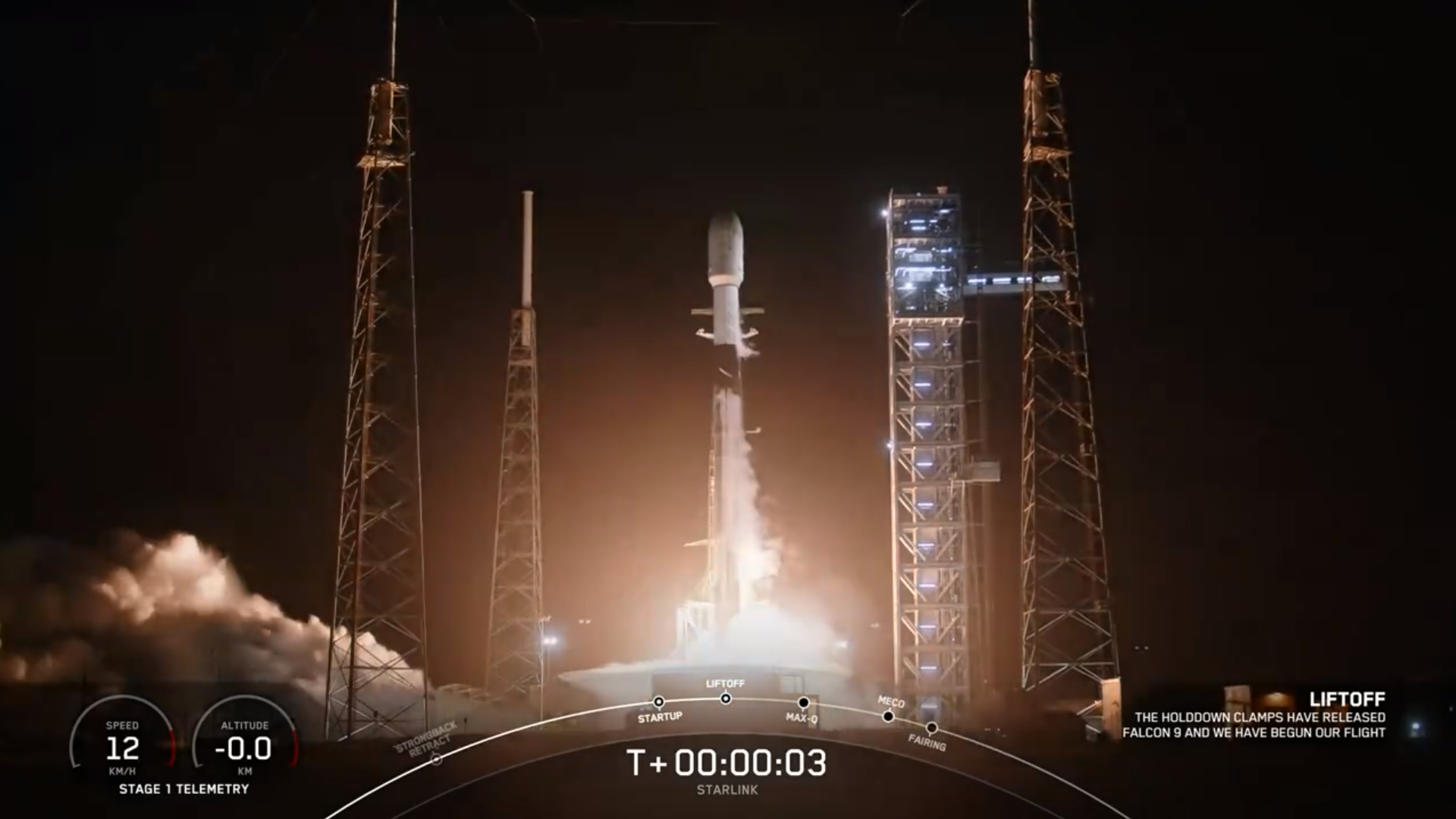
SpaceX added a new personal best to a burgeoning set of 2023 accomplishments last night, successfully launching a Falcon 9 booster out of Cape Canaveral Space Force Station, Fla., for the record-breaking 19th time. Seasoned veteran B1058—which cemented her history-making credentials on her very first flight, back on 30 May 2020, when she launched Dragon Endeavour and Demo-2 astronauts Doug Hurley and Bob Behnken for a multi-month stay aboard the International Space Station (ISS)—took flight from the Cape’s storied Space Launch Complex (SLC)-40 at 12:33 a.m. EST Saturday, carrying 23 Starlink internet communications satellites into low-Earth orbit.
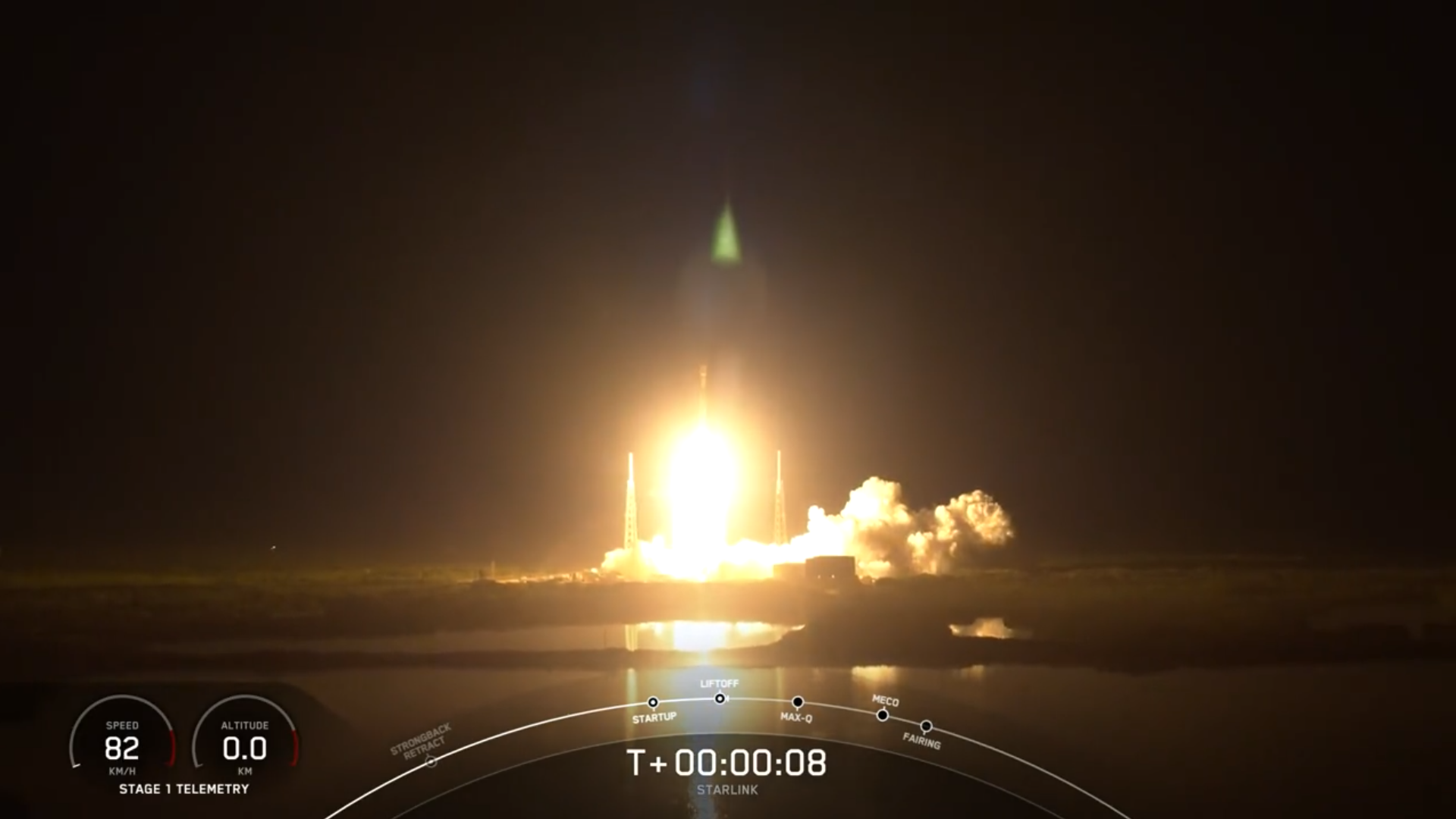
With less than ten days remaining before the New Year’s Eve bell tolls, 2023 has proved a remarkable dozen months, with 89 “single-stick” Falcon 9 launches, four missions by the triple-barreled Falcon Heavy and an inaugural pair of test flights by the fully integrated Starship/Super Heavy stack. That figure dwarfs even the record-breaking 61 flights achieved by SpaceX in 2022, with the Hawthorne, Calif.-headquartered organization pushing its launch cadence from a mission every 5.9 days last year to one every 3.8 days now.
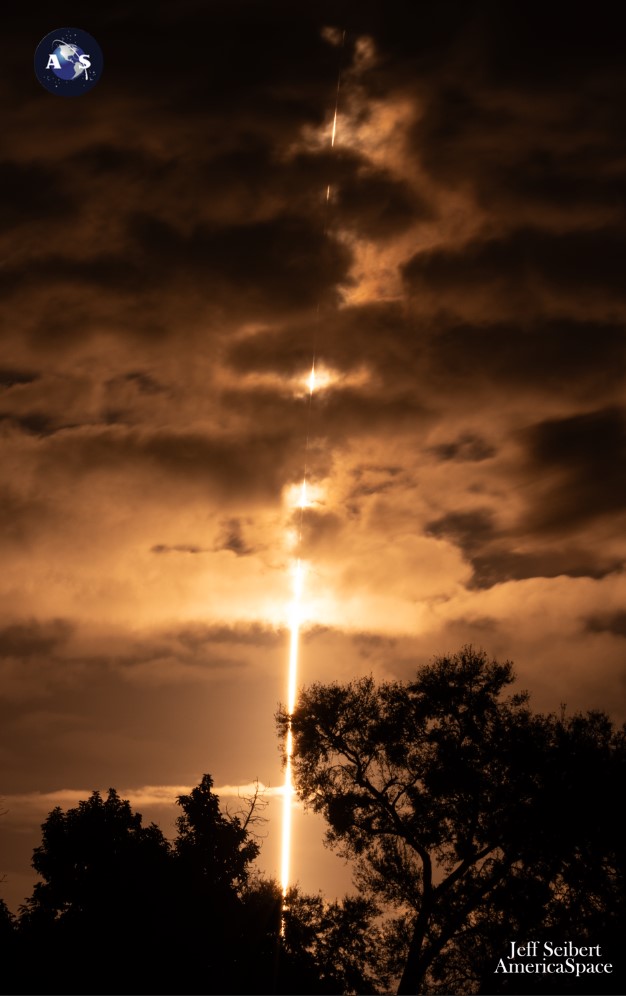
Records have fallen like ninepins, with SpaceX hitting its first eight-launch month in March and its first nine-launch month in August, doubling the number of Falcon Heavies flown in any single calendar year and more than doubling its 2022 personal best for the tempo of missions out of Vandenberg Space Force Base, Calif. It also set a new record of only four hours and 12 minutes between pairs of flights last spring and boosters have now flown on record-setting 16th, 17th, 18th and now 19th occasions.
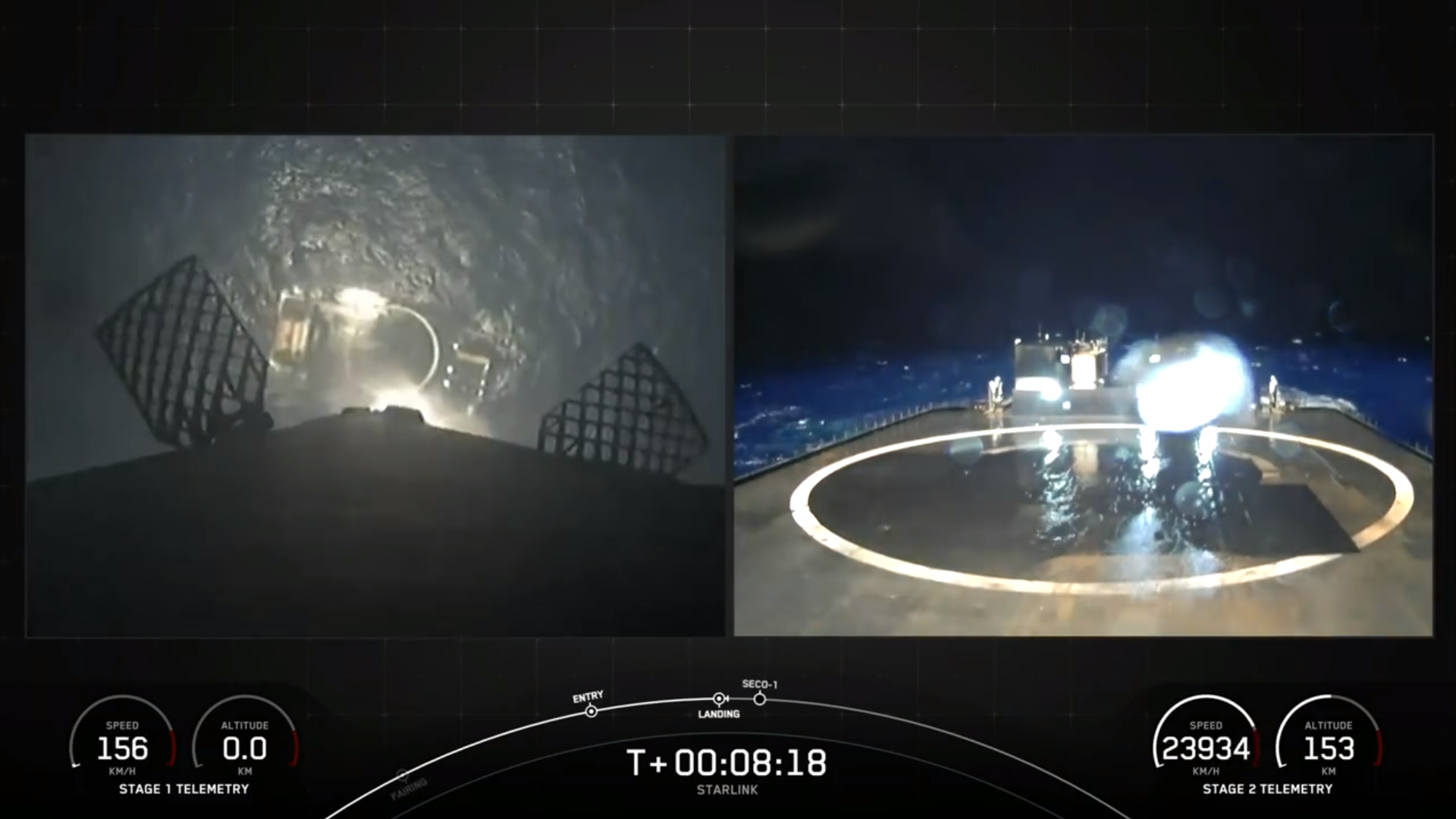
Flying last night’s mission was B1058, which now becomes the most-flown of SpaceX’s fleet of birds, having come online 3.5 years ago to launch Dragon Endeavour and her Demo-2 crew of NASA astronauts Doug Hurley and Bob Behnken for their nine-week stay on the International Space Station (ISS). In doing so, she facilitated the first U.S. human spaceflight, launched atop a U.S. rocket, aboard a U.S. spacecraft, and from U.S. soil, since the end of the Space Shuttle Program in July 2011.
Following her return from Demo-2 duties, B1058 entered regular service and under her watch the records steadily stacked up. In July 2020, on only her second mission, she established a new empirical record—now broken—of only 51 days between pairs of launches by the same orbital-class booster, eclipsing an old Space Shuttle record that had stood for more than three decades.

Since then, she has lofted more than 600 flat-packed Starlink satellites on 14 missions between October 2020 and last night, together with South Korea’s ANASIS-II military communications satellite, the CRS-21 Cargo Dragon to the ISS and the Transporter-1 and Transporter-3 multi-customer “rideshares”, totaling almost 800 discrete payloads. Flying Transporter-1 in January 2021, B1058 successfully launched the largest number of separate payloads (143) ever lifted to orbit by a single U.S. orbital rocket.
Last fall, she became the first Falcon 9 to fly on a 14th and 15th occasion, but since the fleet-leaders were certified only to 15 missions her “active” status was paused as recertification got underway to extend her lifetime to 20 flights. Returning to the fold last summer, she became the first booster to hit a 16th launch in July, a 17th in September and an 18th in November. Eighteen flights is as yet unmatched by any other member of the fleet, positioning B1058 at least two missions ahead of any of her siblings.

It remains to be seen if B1058 will remain active for 20 flights, but with her mission-to-mission pace now adopting a measure of normalcy it does not seem unreasonable to suppose that 20 could be achieved early next spring. During her first year of service (2020-2021), her turnaround times averaged about seven weeks, with a personal best of only 27 days attained between a pair of flights in March and April 2021.
As her flight rate increased beyond her tenth launch in January 2022, spacing between missions increased from two to three months and—in response to the extended recertification campaign earlier in 2023—more than a half-year elapsed between her 15th and 16th outings. Turnaround times have since restabilized with less than two months between her four most recent flights.
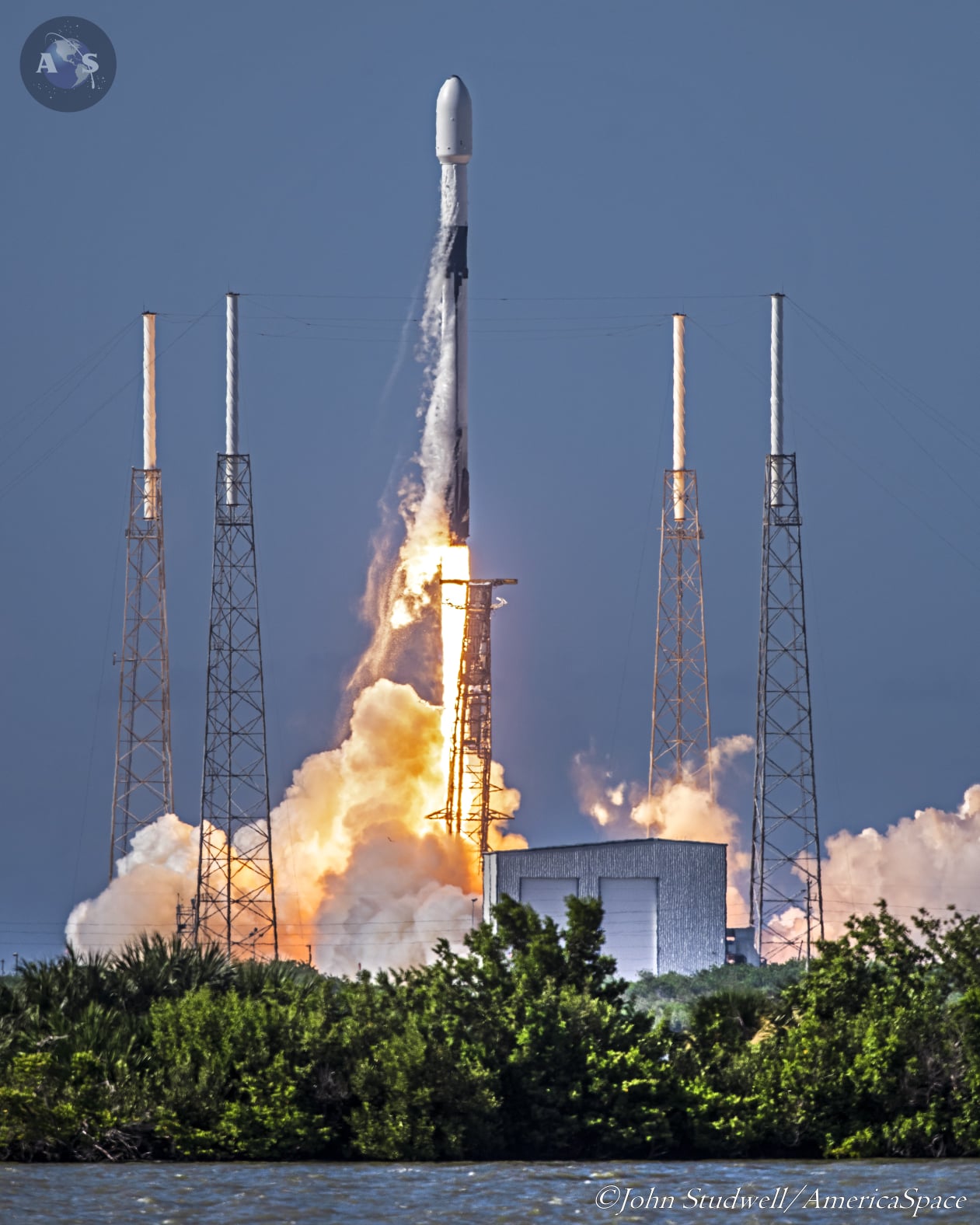
Weather for last night’s launch appeared iffy, following several days of unfavorable conditions on the Space Coast. “An extensive high-pressure area located along the Eastern U.S. will keep the winds along the Space Coast onshore,” noted the 45th Weather Squadron at Patrick Space Force Base in a Friday update. “On Friday evening, a weak inverted trough will move near the Spaceport, enhancing the cloud coverage.”
All told, this was expected to create an approximately 60-70-percent chance of acceptable conditions, with the Thick Cloud Layers Rule and Cumulus Cloud Rule identified as key violating factors. Conditions were expected to improve to around 80-percent favorability in the event of a 24-hour scrub to Saturday night. Forecasters also identified a moderate risk posed by upper-level wind shears.
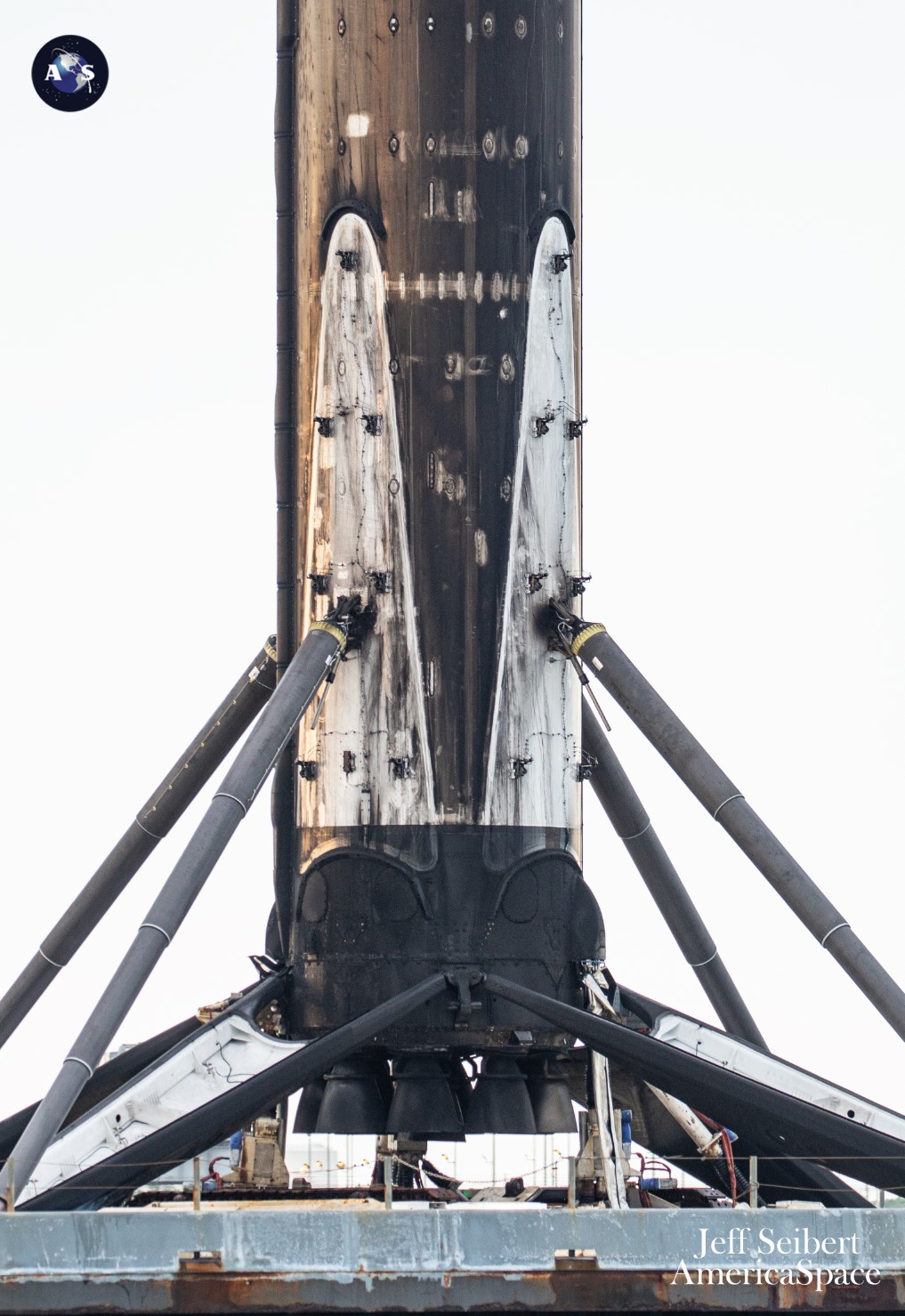
In readiness for launch, the Autonomous Spaceport Drone Ship (ASDS), “Just Read the Instructions”, put to sea out of Port Canaveral on Tuesday, bound for a recovery position some 390 miles (630 kilometers) offshore in the Atlantic Ocean. Eight minutes after last night’s launch, B1058 pirouetted smoothly to an on-point touchdown—her seventh—on JRTI’s deck and her 18th drone-ship landing across her career.
With the core stage gone, the Falcon 9’s second stage ignited its single Merlin 1D+ Vacuum engine for a six-minute “burn” to lift the 23 Starlinks, totaling 40,600 pounds (18,400 kilograms), into low-Earth orbit. Deployment of the stack occurred some 65 minutes into last night’s mission, bringing to over 1,900 the total number of these flat-packed internet communications satellites orbited on more than 60 Falcon 9 missions in 2023.
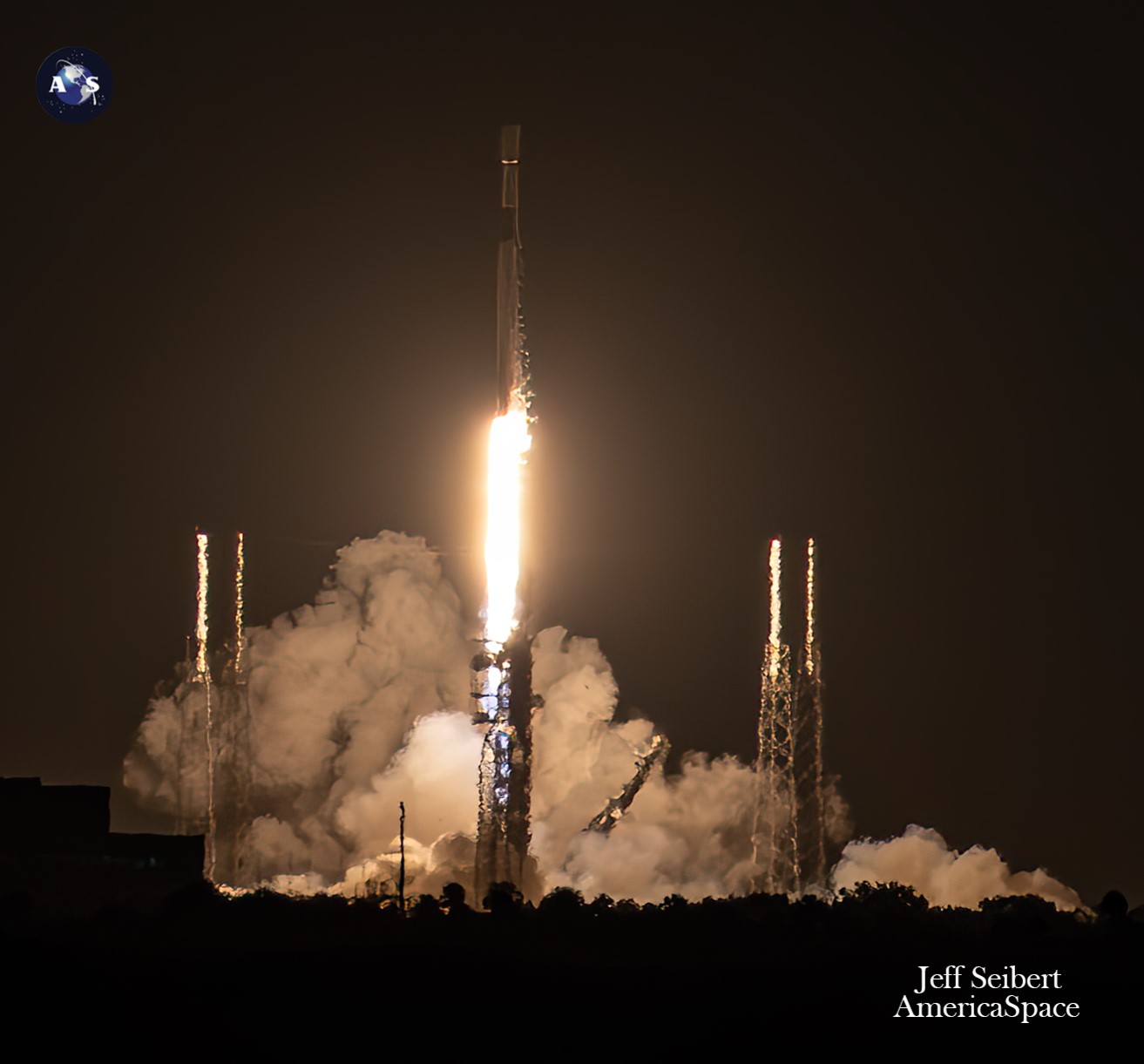
As a network, Starlink facilitates high-speed and low-latency internet provision to 70 sovereign nations and international markets in North and South America, Europe, Asia, Oceania and Africa. Landlocked Eswatini—formerly Swaziland in southern Africa—and Paraguay joined Starlink earlier this month.
The Starlink “V2 Mini” satellites, first flown in February, boast three to four times greater “usable” bandwidth than earlier Starlink iterations. “V2 Minis include key technologies—such as more powerful phased-array antennas and the use of E-Band for backhaul—which will allow Starlink to provide 4x more capacity per satellite than earlier iterations,” SpaceX explained. “Among other enhancements, V2 Minis are equipped with new argon Hall thrusters for on-orbit maneuvering.”
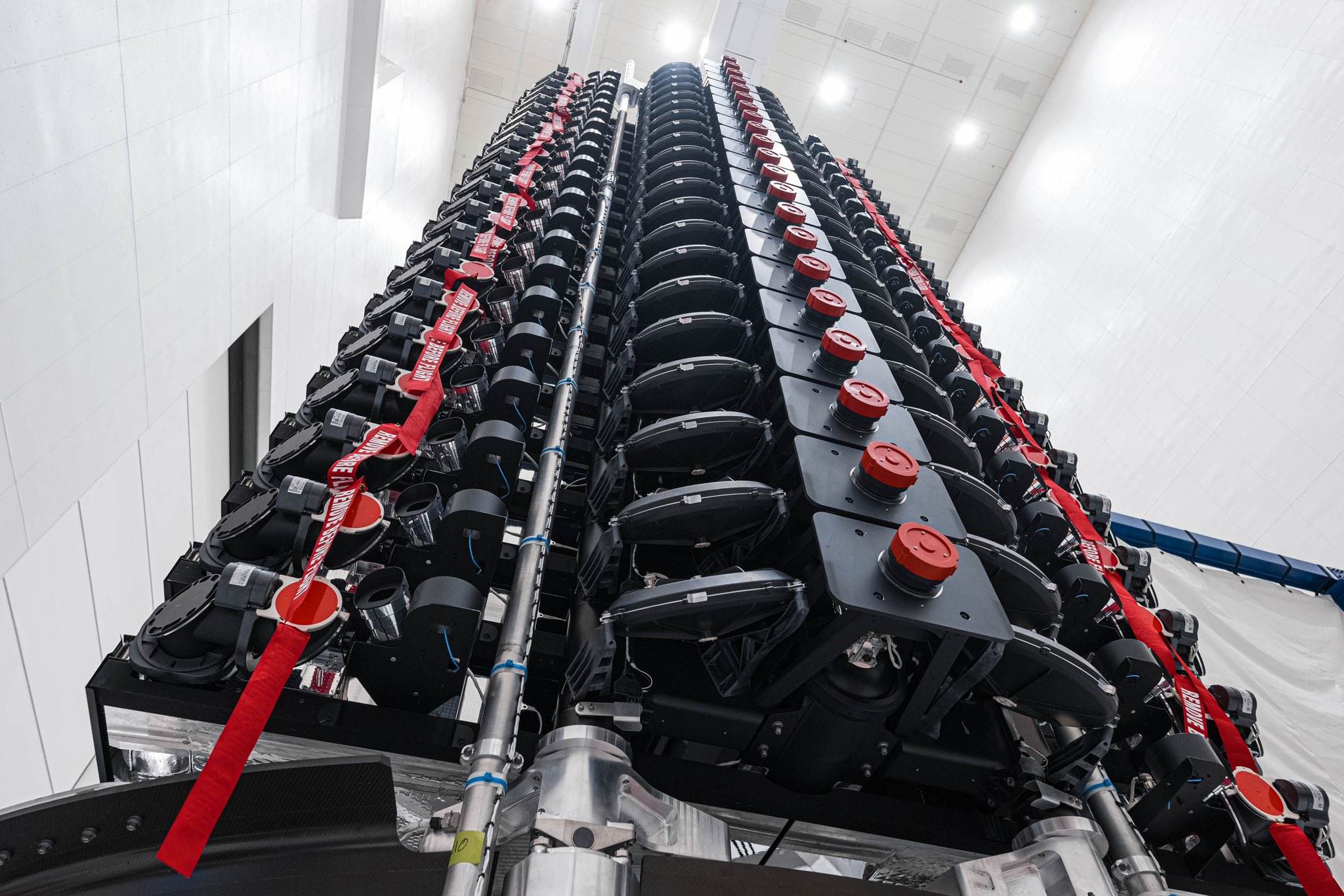
Florida-based intercity operator Brightline adopted Starlink on its trains earlier in 2023, the first passenger rail service in the world to do so. Additionally, El Salvador’s Ministry of Education has begun integrating Starlink capability into its schools to help close the digital divide between urban and remote rural communities and 50 Rwandan schools are now connected via Starlink’s high-speed internet service.
Attention now turns to Vandenberg, where an eight-times-used Falcon 9 stands ready to launch a pair of “passive” SARah reflector satellites, flying on behalf of the German military, to join the SARah-1 radar-imaging surveillance platform, launched out of Vandenberg last June. Liftoff is targeted from the West Coast’s SLC-4E during an 83-minute “window” that opens at 5:11 a.m. PST Saturday.






6 Comments
Leave a Reply6 Pings & Trackbacks
Pingback:SpaceX Launches 19x-Flown Falcon 9, Adds New Record to 2023 Books - Shadownews
Pingback:SpaceX Launches 19x-Flown Falcon 9, Adds New Record to 2023 Books - Space Quarter
Pingback:Farewell to the “Old Guard”: Bob & Doug’s Booster Lost at Sea - AmericaSpace
Pingback:SpaceX Targets New Records, Heads into 2023 Year-End - SPACERFIT
Pingback:SpaceX Targets Tuesday for 2024’s First Launch, Busy January Lies Ahead - SPACERFIT
Pingback:On Cosmonautics Day, SpaceX Launches Record-Setting 20x-Flown Falcon 9 - AmericaSpace